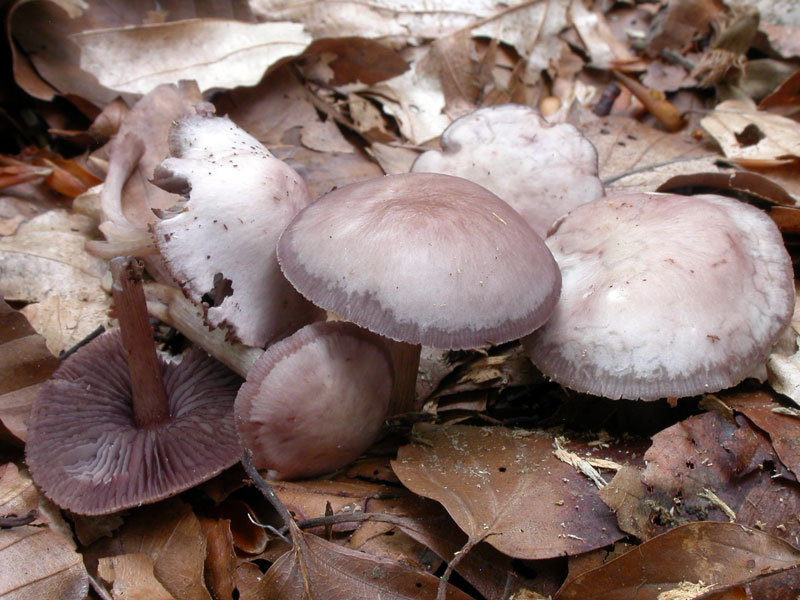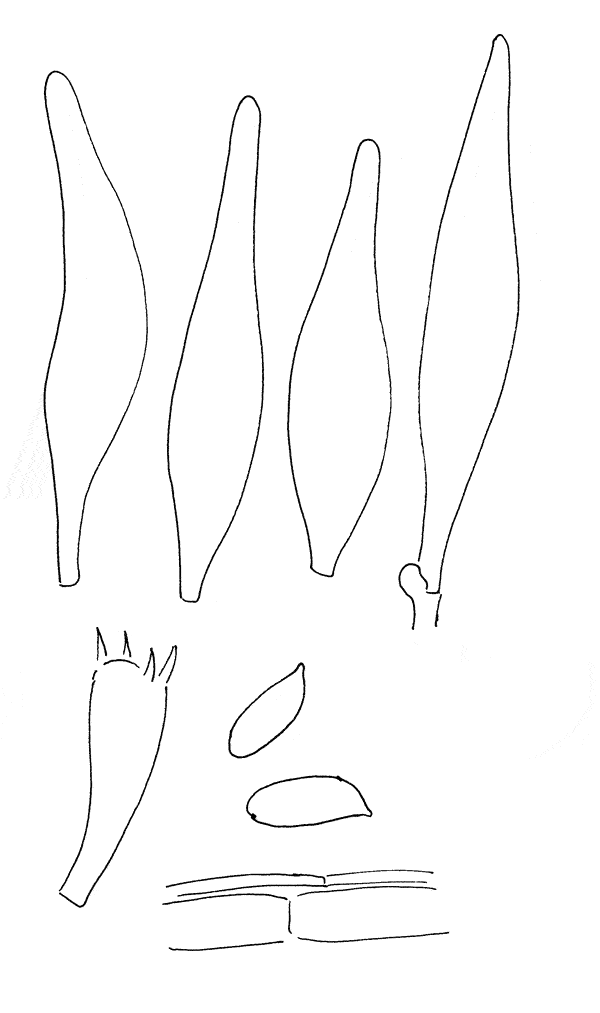Mycena pelianthina
Mycena pelianthina
Description
Cheilocystidia, basidium, spores and hyphae of the pileipellis.
Cap 15-50 mm across, hemispherical to campanulate, becoming plano-convex, shallowly sulcate, translucent-striate, hygrophanous, glabrous, slightly lubricous when moist, date brown to pale dingy purplish brown or pale lilaceous brown, drying pale ochraceous or beige, with or without a pinkish shade. Gills 29-50 reaching the stem, adnexed or emarginateto adnate, decurrent with a short tooth, dorsally intervenose, pale lilaceous grey-brown, pale purplish brown, densely punctate by minute, dark purplish brown dots (pleurocystidia), the edge dark purplish brown. Stem 25-70 x 2-8 mm, fragile to firm, equal or somewhat broadened downwards, cylindrical or laterally compressed, coarselly fibrillose or even floccose, whitish with slight yellowish, brownish or lilaceous tint, lenghtwise striate by dark purplish brown fibrils, the base densely white-villose. Odour and taste raphanoid. Basidia 20-24 x 4.5-5.5 µm, slenderly clavate, 4-spored. Spores 6-7.5(-8) x 3.1-4.1(-4.5) µm, Q = 1.7-2.1, Qav ˜ 1.9-2, pip-shaped, amyloid. Cheilocystidia 40-70 x 6-14 µm, mostly occuring mixed with the basidia, but often very much protruding, and then locally forming a sterile band, fusiform, smooth, with purplish brown contents. Pleurocystidia numerous, similar, with purplish brown contents. Hyphae of the pileipellis 1.5-4.5 µm wide, smooth. Hyphae of the cortical layer of the stem 2.5-3.5 µm wide, smooth, the terminal cells 2-8 µm wide, cylindrical, simple or apically somewhat branched. Clamps present in all tissues.
Ecology and distribution
Typically growing solitarily or in small groups among vegetable debris under Fagus. It has been collected under Fagus in South Norway, but is also found under Alnus and on fallen needles in Picea woods on calcareous soil. Autumn. Very rare.

